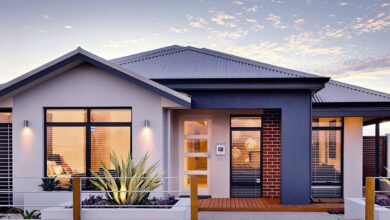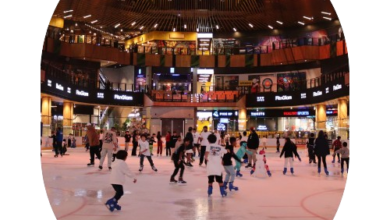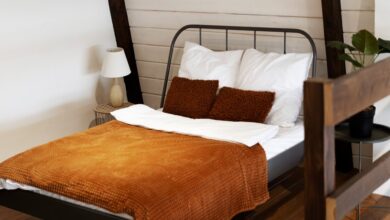
Handmade rugs have long been associated with craftsmanship, artistry, and cultural heritage. In a city like Dubai, known for its opulence, luxury, and global influence, handmade rugs play a significant role in enhancing the aesthetic appeal of homes, offices, and luxury establishments. As Dubai continues to blend its traditional Middle Eastern roots with modern design sensibilities, handmade rugs have become more than just a floor covering – they are a statement of elegance and cultural richness.
Table of Contents
ToggleThe Tradition of Handmade Rugs
Handmade rugs are often viewed as masterpieces of design and craftsmanship. These rugs, woven by skilled artisans, embody centuries of tradition. Across the world, regions like Persia (modern-day Iran), Turkey, India, and Afghanistan have been historically known for producing exquisite handmade rugs. Each region has its unique style, design, and technique, offering a wide variety of choices for consumers.
In Dubai, the appeal of handmade rugs lies not only in their intricate designs but also in the stories they tell. These rugs often feature symbolic patterns and motifs, ranging from geometric designs to floral patterns, that reflect the cultural history of their places of origin. Dubai’s international outlook and diverse population have resulted in an eclectic marketplace where rugs from various regions can be found, each representing a different cultural heritage.
The Process of Creating Handmade Rugs
The process of creating a handmade rug is labor-intensive and requires tremendous skill. Each rug is crafted using techniques that have been passed down through generations. The production involves several steps, from sourcing high-quality materials like wool, silk, and cotton to the final hand-knotting or weaving process. Depending on the complexity of the design and size, it can take months or even years to complete a single rug.
- Material Selection: The first step in creating a handmade rug is selecting the right materials. Wool and silk are among the most commonly used fibers. Wool is prized for its durability, while silk is often used in high-end rugs for its lustrous appearance. In Dubai’s high-end market, silk and wool blends are highly sought after for their luxurious texture and sheen.
- Dyeing: After the material is selected, it is dyed using natural or synthetic dyes. Traditional rug-making regions often use vegetable dyes, which give the rugs a unique richness and depth of color. The color palette in handmade rugs can vary significantly, depending on the origin of the rug, but deep reds, blues, greens, and earthy tones are common in traditional designs.
- Weaving and Knotting: The weaving process, especially hand-knotting, is the most time-consuming aspect of rug production. In many traditional styles, artisans tie individual knots onto the base structure of the rug, creating intricate patterns knot by knot. This meticulous process is what gives handmade rugs their distinctiveness. Higher knot density generally indicates higher quality and durability.
- Washing and Finishing: Once the rug is woven, it is washed to bring out the vibrancy of the colors and soften the texture. In some cases, the pile may be trimmed to create a specific texture or pattern.
Handmade Rugs in Dubai: Market and Trends
Dubai has long been a hub for luxury goods, and handmade rugs are no exception. The city’s markets and high-end showrooms offer a vast selection of handmade rugs, catering to various tastes and preferences. From opulent, silk Persian rugs to contemporary designs inspired by modern aesthetics, Dubai’s rug market is diverse.
Deira Souk: A Traditional Rug Shopping Experience
One of the most popular places to buy handmade rugs in Dubai is the Deira Souk, a traditional market that has been a hub for trade for centuries. Walking through the souk, visitors are greeted with a dazzling array of rugs, with sellers displaying carpets from regions such as Iran, Afghanistan, and Turkey. Many of these sellers are experts in their trade, offering insights into the history and symbolism behind each rug.
Boutique Stores and Showrooms
Apart from the souks, there are also luxury showrooms in Dubai where handmade rugs are treated as exclusive art pieces. These boutiques offer personalized service, guiding buyers through collections of rare and high-quality rugs. The experience of buying a handmade rug in these stores is often more intimate, with sellers focusing on the craftsmanship, history, and provenance of each piece.
The Rise of Contemporary and Modern Handmade Rugs
While traditional Persian and Oriental designs remain popular, there is a growing trend in Dubai towards contemporary handmade rugs. Modern rug designs often feature minimalist patterns, geometric shapes, or abstract art, catering to Dubai’s expanding contemporary architecture and interior design landscape. These rugs are often custom-made to suit the interior spaces of luxury villas, penthouses, and high-end hotels, blending tradition with modern elegance.
Custom-Made Rugs: Personalizing Luxury
In addition to purchasing pre-made rugs, many buyers in Dubai are turning to custom-made rugs. Customization allows individuals to commission rugs that perfectly suit their interior spaces, whether in terms of size, color, or design. This option is especially popular among luxury property owners and hotels who want a unique and personal touch to their interiors.
Dubai’s rug boutiques often collaborate with artisans from traditional rug-making regions to produce custom pieces, incorporating personal preferences while maintaining the authenticity of traditional craftsmanship. These custom-made rugs can range from reproductions of antique designs to entirely original patterns that match modern aesthetics.
Care and Maintenance of Handmade Rugs
Investing in a handmade rug is not just about acquiring a beautiful piece; it also involves maintaining its beauty over time. Handmade rugs, especially those made from natural fibers like wool and silk, require proper care to ensure their longevity.
- Regular Cleaning: Dust and dirt can accumulate in the fibers of a rug, especially in high-traffic areas. Regular vacuuming is essential, but it’s important to avoid using harsh vacuum cleaners that could damage the delicate knots.
- Professional Cleaning: Over time, rugs will need professional cleaning to remove deep-seated dirt and restore their vibrancy. In Dubai, many specialist services cater to handmade rugs, using techniques that are gentle and preserve the integrity of the material.
- Protection from Sunlight: Direct sunlight can cause the colors in a handmade rug to fade over time. It is advisable to keep rugs out of prolonged exposure to direct sunlight or use UV-protective window coverings.
- Avoiding Moisture: Handmade rugs should be kept dry, as moisture can damage the fibers and lead to mold or mildew growth. In Dubai’s humid climate, it’s essential to avoid placing rugs in damp areas, and rugs should be aired out periodically.
Conclusion
Handmade rugs in Dubai are not just functional pieces; they are works of art that combine beauty, craftsmanship, and cultural heritage. From traditional markets to luxury showrooms, the city offers an incredible variety of handmade rugs, catering to diverse tastes and design preferences. Whether you’re looking for an intricate Persian rug or a modern, minimalist design, Dubai’s rug market is a reflection of the city’s fusion of tradition and modernity. Investing in a handmade rug is more than just a purchase – it’s acquiring a piece of history that will last for generations, adding a touch of elegance and culture to any space.





